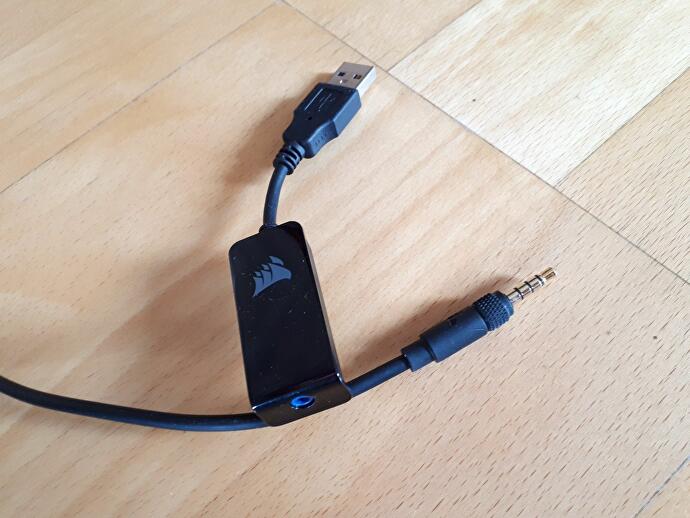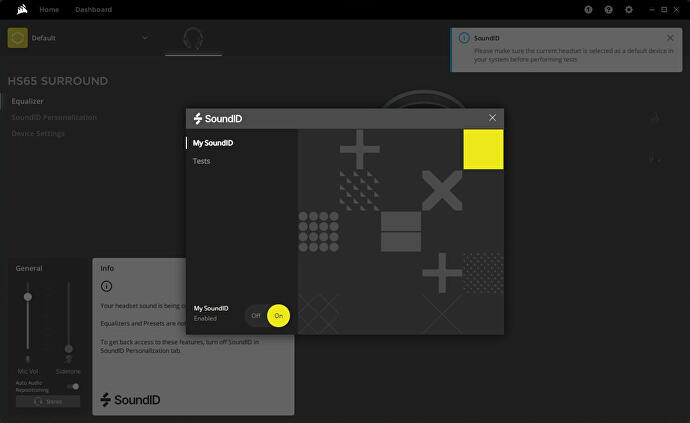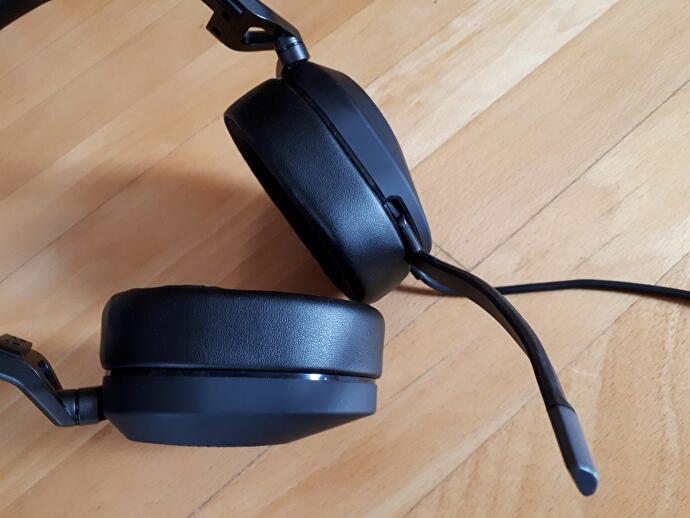Corsair HS65 gaming headset in test – I managed to get a good sound after a few detours

Corsair’s HS65 doesn’t need many words to describe it: it’s wired, has a volume control and a built-in microphone that flips up to mute. The smooth shape made of plastic and aluminum conveys the focus on the essentials very convincingly. The subtle grilles set successful accents in the self-confidently reduced exterior. The HS65 doesn’t appear as a high-end headphone – but fortunately it has nothing in common with the overly playful models of many competitors. At just under 90 euros, which you pay at Amazon, for example, it is one of the smartest representatives in its price range for me.
Above all, it sits very comfortably on the head, even during long sessions. In any case, it doesn’t press on my average grown beet, while the ears find enough space under the soft artificial leather shells. I could only imagine that larger heads will definitely feel the temple, because it seems comparatively narrow and cannot be bent too easily. Players with appropriate skulls should therefore perhaps plan a trial fit.
Incidentally, neither the cable nor the microphone are detachable. However, if you fold the microphone upwards, you can use the HS65 as normal headphones without any problems. I wouldn’t do it on the street – the microphone arm is too conspicuous for that – but it has served me well on longer plane and train journeys.

Unfortunately, the sound that it produces by “nature” is not the final word. Its sound is much too muffled for that, as if someone had put a thick cloth over it. So if you only plug the 3.5 mm jack into a PC, switch or a PS5 or Xbox controller, you have to make do with the fact that music in particular can hardly unfold. This is known to have less of an effect in games, but it is audible in every application.
It only gets better if you manually change the EQ balance where that is possible or plug the headset into the supplied USB adapter, which Windows recognizes as an HS65 audio device. Because that’s what Corsair’s iCUE software accesses, which can be used to change the sound properties of connected devices. Among other things, in addition to the original dull profile, there are four more that, depending on the setting, emphasize step noise in shooters or emphasize the bass. And if you want, you can of course create your own anyway.

It is interesting that iCUE can be guided through a series of tests in order to create the so-called My SoundID. Only one of these can be saved and it basically only applies to the music style listened to during the test. Nevertheless, this can be of practical help. I just wish it was possible to adjust this profile afterwards, because unfortunately that’s not possible.
In addition, there is the option to activate surround sound simulated with Dolby Audio, which gives what is heard a depth that the headset does not otherwise provide. This is mainly an advantage when gaming, as Dolby Audio opens up the space and makes virtual worlds appear a lot more vivid. It’s not as if the positioning of sounds actually works differently. But you can locate them better because the acoustic environment appears a lot larger. I still prefer Sony’s Pulse 3D here, because the room is a whole lot livelier there in direct comparison. Not only steps, but also shots and impacts are highlighted more clearly than is the case with the HS65. However, that shouldn’t distract from the fact that the three-dimensional sound is definitely an asset!
So you can achieve a significant improvement in the sound characteristics with almost all iCUE settings. The HS65 always has a hard time with metal in almost all its variants and occasionally you have to try out which profile and which surround option produce the best result in each case. All in all, you can achieve a reasonably balanced balance in just a few simple steps, in which essentially no pitch is neglected.

Last but not least, another strength is the microphone, because it transmits voices very clearly and distinctly, albeit with a slight hiss. You have to put it relatively close to your mouth with the flexible arm so that you don’t come across as too quiet, but in return the microphone only weakly picks up ambient noise. It does notice typing on a keyboard, but I can run a loud fan in the background almost without hesitation. Not that I’m happy about the current temperatures, but that way I can at least expect my airy refreshment from the team chat.
Corsair HS65 – test conclusion
With the HS65 from Corsair you get a wired headset for just under 90 euros, which I particularly like with its focus on the essentials. The no-frills workmanship, the handy volume wheel, the good microphone and the decent surround sound on the PC are plus points that make it particularly impressive when gaming. The HS65 is also suitable for listening to music on a PC by adjusting the balance accordingly, using a profile included in the software or using guided profiling. Even if I don’t like the dull sound much less without iCUE software, the HS65 is definitely worth recommending.
![]()
Reference-www.eurogamer.de